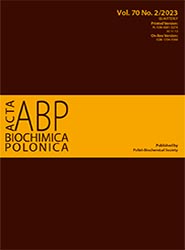A reverse vaccinology approach to design an mRNA-based vaccine to provoke a robust immune response against HIV-1
Abstract
There have been substantial advances in HIV research over the past three decades, but we are still far from our goal of eliminating HIV-1 infection entirely. Numerous ever-evolving antigens are produced as a result of HIV-1’s genetic variability. Developing an effective vaccination is challenging because of the structural properties of the viral envelope glycoprotein that obscure conserved receptor-binding sites and the presence of carbohydrate moieties that prevent antibodies from reaching potential epitopes. To work on an HIV-specific vaccine, this study identified 5 HIV-surface proteins, from the literature, to screen potential epitopes and construct an mRNA vaccine. A wide range of immunological-informatics techniques were utilized to develop a construct that efficiently stimulated cellular and humoral immune responses. The vaccine was produced with 31 epitopes, a TLR4 agonist termed RpfE that acts as an adjuvant, secretion boosters, subcellular trafficking structures, and linkers. It was determined that this suggested vaccine would cover 98.9 percent of the population, making it widely available. We, furthermore, carried out an immunological simulation of the vaccine illustrating the active and stable responses from innate and adaptive immune cells, the memory cells remained active for up to 350 days after vaccine injection, whereas the antigen was excreted from the body within 24 hours. Docking performed with TLR-4 and TLR-3 showed significant interaction with –11.9kcal/mol and –18.2kcal/mol-1 respectively. Molecular dynamics simulations further validated the vaccine’s stability, with a dissociation constant of 1.7E-11 for the TLR3-vaccine complex and 5.8E-11 for the TLR4-vaccine complex. Lastly, codon optimization was carried out to guarantee that the designed mRNA construct would be translated into the host successfully. This vaccine adaptation, if tested in-vitro, would be efficacious and potent as predicted.
Acta Biochimica Polonica is an OpenAccess quarterly and publishes four issues a year. All contents are distributed under the Creative Commons Attribution-ShareAlike 4.0 International (CC BY 4.0) license. Everybody may use the content following terms: Attribution — You must give appropriate credit, provide a link to the license, and indicate if changes were made. You may do so in any reasonable manner, but not in any way that suggests the licensor endorses you or your use.
Copyright for all published papers © stays with the authors.
Copyright for the journal: © Polish Biochemical Society.


